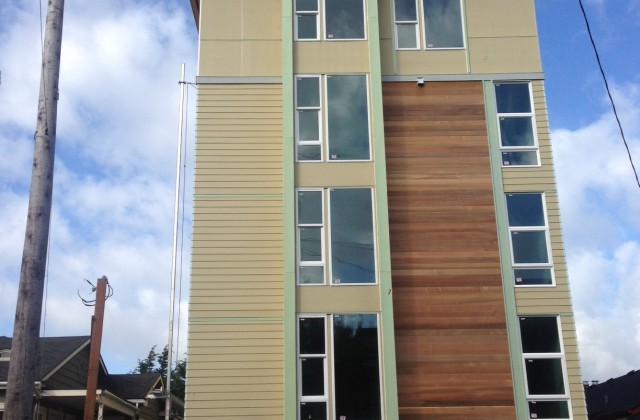David Neiman: Some Basic Facts on Small Efficiency Dwelling Units
On February 16th, the Construction Code Advisory Board (CCAB) will make a final recommendation on reconciling the conflicts between the land use code which sets a minimum unit size for apartments at 220 square feet and the building code that has strong minimum size requirements within those units for habitability. This issue was hotly contested and discussed. There is still some work being done to formalize the recommendation. Meanwhile, David Neiman wrote to the CCAB to point out some basic facts they should keep in mind while looking at adding some modest flexibility to the building code.
As a follow-up to our last meeting and a pre-amble to the next meeting where the full CCAB will consider a final recommendation, I wanted to send around some background information that I think might be helpful to share with the CCAB members who will be coming to this conversation relatively fresh.
There were some persistent factual issues that came up during our meetings that would be good to clear up for the full board discussion. These ideas are widely believed, and were raised several times by multiple people. They are nonetheless incorrect. If they again come up at the full CCAB discussion I hope this information will help to put them aside so the discussion can focus more on substantive issues, less on the red herrings.
1) Unit size and affordability. At various times we heard skepticism that regulations that raise or lower the size of small apartments make much difference in the rent that people pay. Market survey data shows us otherwise. The figures below are from Dupre & Scott’s Oct 2016 Apartment Advisor Report. The first chart shows a direct linear correlation between unit size and rent. The second chart compares the average rent for the median congregate housing unit vs. the median SEDU. Note that the SEDU rent is over 30% higher than its smaller cousin. It’s also noteworthy that the average unit size for SEDUs is weighing in at 286sf, well above the statutory minimum. See page 7 of the attached report: TheApartment Advisor October 2016 by Dupre + Scott.
2) Small apartments dominating the housing market: On multiple meeting members expressed a belief that micro-apartments make up an outsized portion of our new housing construction. Concerns were voiced that if it were possible to build 220sf SEDUs we might become a city where the multi-family housing stock was largely made up of ultra-small apartments. The reality is quite the contrary. Below are some statistics about last year’s housing production from page 7 of the same Dupre & Scott report:
- 15% of units were studio apartments.
- 56% of units were 1 bedroom apartments.
- 24% of units were 2 bedroom apartments.
Here’s Seattle’s overall stats for housing production citywide. Last year we permitted over 11,000 units of housing.
Here’s the permit data for SEDU permits issued citywide in 2016. We permitted 791 SEDU units in 18 projects. This info is not as easy to gather since the city doesn’t directly track production of specific unit types. This information is gathered from the pro version of Seattleinprogress.com using keyword searching of project descriptions. Similar data was presented in an article in the Urbanist last year, showing less than 1000 SEDU units produced in 2015. Microhousing is a very important segment of our housing sector. It’s is the only form of market rate new construction that can directly increase the supply of affordable housing in the city by building more. This housing is in high demand and we would do well to build more of it. But it is not, by any means, a large portion of our housing production. The kind of changes I have been advocating might increase project density by 10-15%, turning 791 units into perhaps 900 units, as a rough guess. These are not wholesale changes but they are important ones.
Hopefully this helps. I have some closing thoughts that I’d like to share, but my keyboard is running low on ink and I suspect my audience may be running low on patience. I will indulge you with those another day.
Regards,
-DEN
 David Neiman is the principle of Neiman Taber Architects, a residential architecture firm specializing in housing adapted to the Pacific Northwest climate. David was also been a leading (and successful) proponent of making significant changes to the multi-family code
David Neiman is the principle of Neiman Taber Architects, a residential architecture firm specializing in housing adapted to the Pacific Northwest climate. David was also been a leading (and successful) proponent of making significant changes to the multi-family code






